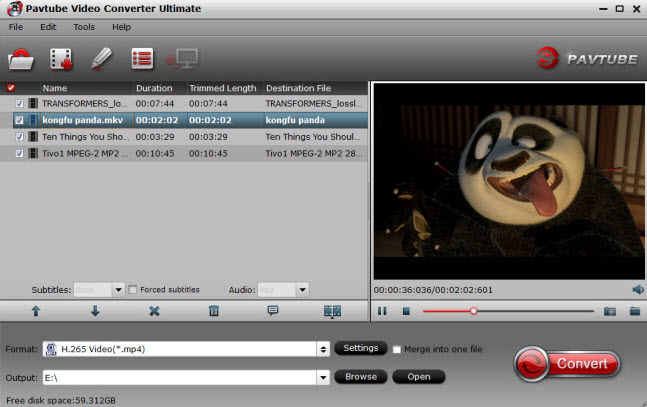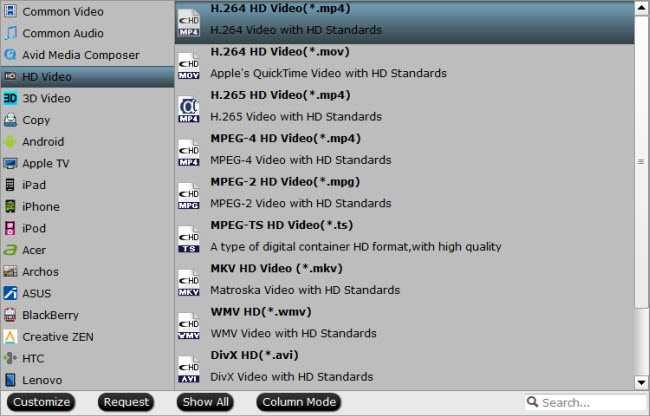As a movie project file created by Windows Live Movie Maker, a WLMP file contains movie transitions, music and effects as well as links to digital photos or videos, however, they do not contain actual video. WLMP files are used to create personal videos for sharing with friends and family. They can be exported to .WMV files, published to YouTube and burned to DVDs.
Since WLMP file is not a real video, you will fail to play files with this file extension on some regular media players such as VLC, QuickTime Player. For users who wish to enjoy WLMP files on iPhone/iPad, you will first need to export WLMP files to video format which can be recognized by your iPhone or iPad, the following article will show you 2 different ways to achieve that.
Solution 1: Convert WLMP to iPhone/iPad with Windows Live Movie Maker
Windows Live Movie Maker can also works as a splendid video conversion program to assist you to convert WLMP files to MPEG-4/H.264 video file that’s supported by your iPhone and iPad. Here are the detailed steps to export WLMP to MP4/H.264.
Step 1: Launch Windows Live Movie Maker.
Step 2: Click File -> Open Project to import the .wlmp project file
Step 3: Click File – > Save Movie -> For viewing WLMP file on iPhone/iPad, just choose to save the Windows Live Movie Maker file as MPEG-4/H.264 Video File(*.mp4).
Tips: For Windows Live Movie Maker version 2012, you can save WLMP file to both MP4 and WMV, but for the previous version, you can only save WLMP file to WMV.
Related article: Edit 4K with WMM | Export WMM Files to MP4 | WMM Supported File Formats
Solution 2: Convert WLMP for iPhone/iPad with Pavtube Video Converter Ultimate
For those people who are using the previous version of Windows Live Movie Maker 2012 or if you wish to produce more popular digital file formats, then we highly recommend you to download Pavtube Video Converter Ultimate. The application can assist you to efficiently output WLMP to iPhone/iPad readable digital file formats such as MPEG-4, H.264 or even H.265 for iPhone 7/7 Plus/X/8/8 Plus/XR/XS/XS Plus/iPad Pro with smaller file size but splendid quality. To get the best output video and audio quality, you can flexibly adjust output profile parameters such as video codec, resolution, bit rate, frame rate, audio codec, bit rate, sample rate, channels, etc as you like。
Apart from that, you can also use this great application to convert WLMP files to AVI, MOV, MKV, FLV, 3GP, MPEG-1, MPEG-2, Divx, Xvid, etc for viewing WLMP files on more media player apps or devices.
How to Convert WLMP Files for iPhone/iPad with Pavtube Video Converter Ultimate?
Step 1: Load WLMP files.
Download the free trial version of the program. Launch it on your computer. Click “File” menu and select “Add Video/Audio” or click the “Add Video” button on the top tool bar to import source WLMP files into the program.

Step 2: Define the output format.
Click the Format bar, from its drop-down list, select one of iPhone/iPad most favorable playback formats such as “H.264 HD Video(*.mp4)” under “HD Video” main category.

Tips: Click “Settings” on the main interface to open “Profile Settings” window, here, you can flexibly choose or specify exactly the profile parameters including video codec, resolution, bit rate, frame rate, audio codec, bit rate, sample rate, channels, etc as you like to get better output video and audio quality.
Step 3: Begin the conversion process.
After all setting is completed, hit the “Convert” button at the right bottom of the main interface to begin the conversion process from WLMP to iPhone/iPad supported MPEG-4 or H.264 format conversion process.
When the conversion is finished, click “Open Output Folder” icon on the main interface to open the folder with generated files.












